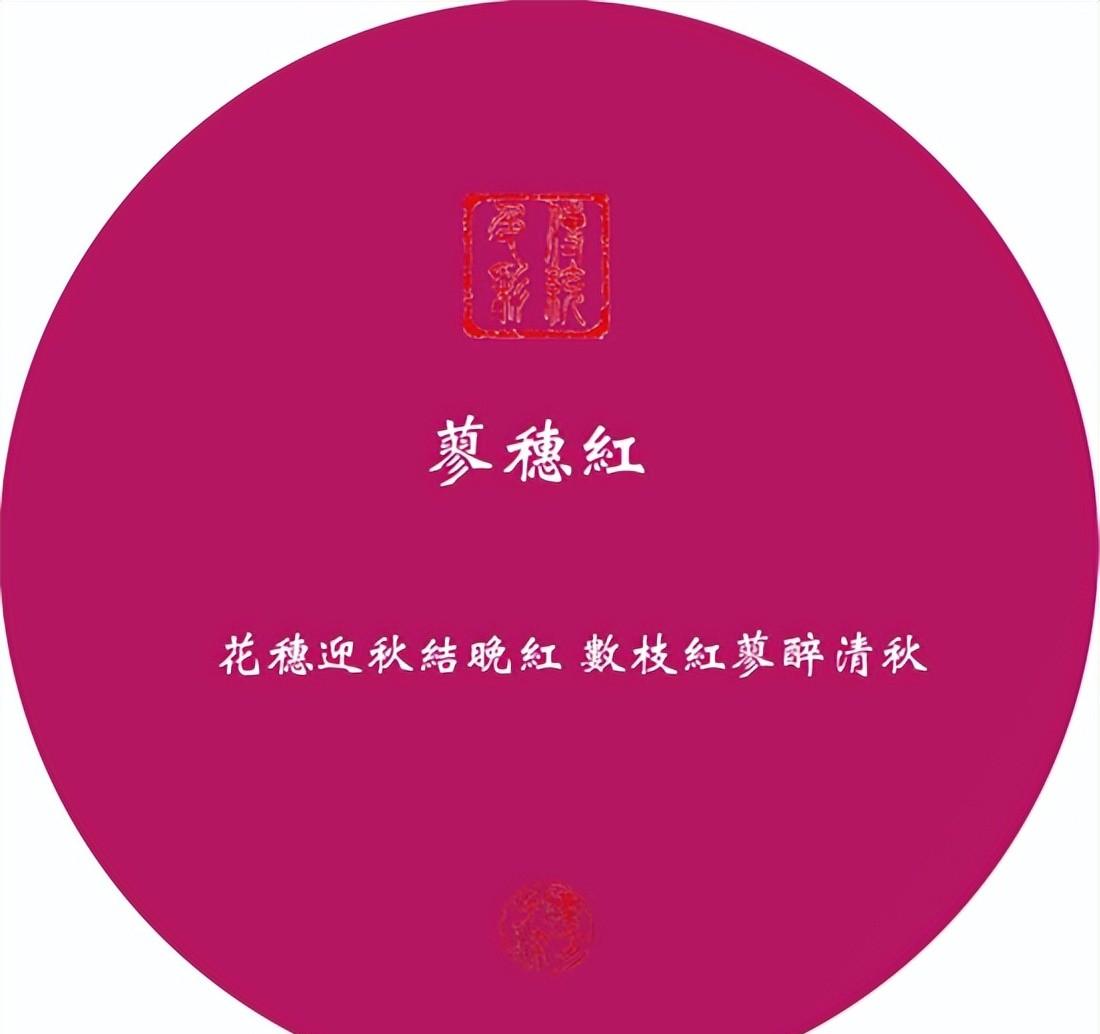
Tateshina red, also known as "Tateshina", is one of the traditional Chinese color red systems. It is the color of the plant Red Indigo flower.
Red indigo ( scientific name : Polygonum orientale Linn. ) is an annual herbaceous plant of the family Tateshina in the family Tateshina. The stems are stout and erect, up to 2 meters tall, and small flowers bloom in early autumn with pale red or rose red. It grows in ditches, meadows on both sides of rivers, and in wet swamps. Because of its rapid growth, tall and luxuriant, green leaves, and dense red flowers, strong adaptability, suitable for ornamentation, it is suitable for ornamental plants. In addition to Tibet, China is also widely spread throughout China,
Source: Tang Weizhuang "From MengjinZhou West to the Rain": When chu'an Yanghua is white, go to the Sui Causeway.
Tang Dumu: The city belt is late salsa green, and the pond is even autumn red.
Northern Song Dynasty Wang Anshi: Lian Ping Jiu Gong Guan Huai Green, Qi Kuo now look at Chu Tateshina.
Song Song Qi: Wild chrysanthemums are spotted and red on the shore, so that the flag is stationed with the autumn wind. The oblique sun is more helpful to win the fence, and the high floor platform is in the shadows.
Many ancient books also have records of Tateshina:
Fragments of the Yongle Canon Volume 2,264: "Zhang Xueshi on the West Lake Seat": Wild Ju Ban Ban Shore Is Red, Making the Flag Stay with the Autumn Wind. The oblique sun is more helpful to win the fence, and the high floor platform is in the shadows.
In the thirty-eighth episode of "Dream of the Red Chamber", Xue Baochao's "Chrysanthemum Poem": Looking forward to the west wind and holding a sullen thought, when the red reeds are white and the intestines are broken. The empty hedge old garden has no trace in autumn, and the cold moon and frost dream are known.
There are many types of tateshina, such as purple indigo, red indigo (a red indigo), green indigo, incense indigo, horse indigo, water indigo, wood indigo, etc., all seven kinds.
Throughout the ages, there have been many literati who have written poems about red flowers:
Song Ouyang Xiu: The deep courtyard has no one to lock the curved pond, and the berry moss goes around the shore in rain clothes. Dragonflies stand at the junction of green ping, and butterflies fly when the red indigo opens.
Song Luyou: Ten years of poetry and wine guest knife island, each for the famous flower bing candle tour. The old fisherman is still happy, and several branches of red indigo are drunk in autumn.
Ming Liu Ji: Red Lotus Danfeng is one color autumn, Chu Yun Wu Shui is leisurely. Everything in the world is passed by the west wind, but the cangjiang river flows day and night.
"Red indigo a bay pattern valerian, white fish double tail jade knife Ming." The poems of Zhang Xiaoxiang, a famous lyricist of the Song Dynasty, vividly describe the characteristics of red indigo flowers.
Autumn red indigo blossoms, is a beautiful scenery "the sound of the waves to return to the shallow, shake a pool of red indigo flowers." ”
In the Book of Poetry and Zheng Feng, the red lotus flower is called "Youlong": "The mountain has Fusu, and the yin has Lotus." If you don't see the sons, you are mad. The mountain has a bridge pine, and the tunnel has a dragon, and there is no zichong, but a cunning child. The poem depicts a young girl and her sweetheart in the mountains flirting and flirting. This wild red lotus flower is just like the woman in the "Book of Poetry", strange to the head of the stream, free and spontaneous, optimistic and open-minded.
The amorous talent Nalan Rongruo once wrote a poem "Dream of Jiangnan": "Jiangnan is good, and it is deliberately passed on by whom." Swallow rock head red moon, wuyi alley green poplar smoke. The scenery recalls that year. ”
In his later years, Qi Baishi was very fond of painting red indigo, and he had a series of works such as "Red Indigo", "Red Indigo Shrimp Diagram", "Red Indigo Scorpion", "Red Indigo Crab" and so on.
Indigo red is the color of this red indigo flower. It is such a wild nature, it is born freely, opens itself, and is free. From literati to yamano villagers, they all dislike this wild beauty.
This color can be passed down to this day, for its own reasons.
The staining process is the same as for most purple reds. In the author's experience, sumac and lac red are the most suitable dyes. With alum as a mordant, you can dye a beautiful red indigo.
Dyeer Huang Ronghua Nongyin Spring Grass in Hankou
In addition, a large number of readers have not yet developed the habit of liking, I hope that everyone will like it after reading it", every "like" of yours, I have taken it as a motivation!
Original is really not easy, not only the text, the plant dyeing in the pictures are actually made, many times want to give up.
Persistence is a belief, and focus is an attitude.
The best support is to forward the circle of friends